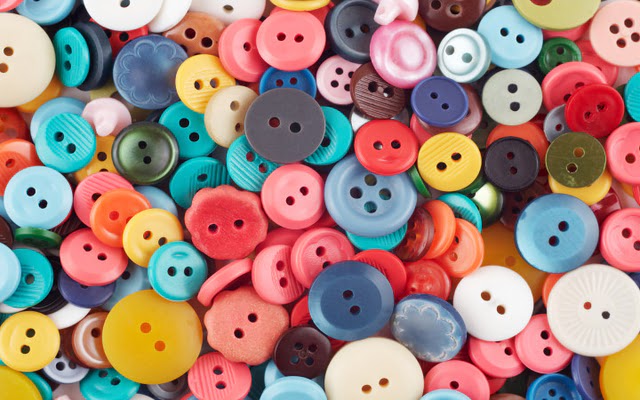
They are small. We often don’t give them much consideration. However, they hold great importance to us. What are we referring to? Buttons, of course!
The origin of the button and its invention remains unknown. Archeologists have discovered primitive devices used to secure clothing dating back to 3,000 B.C. However, these devices were not the same as the buttons we are familiar with today.
It was likely in the 1200s in Europe that buttons, in their current form, were invented and gained popularity. Initially, they were not commonplace items available to everyone. Instead, they were often viewed as miniature works of art and symbols of status and wealth.
In fact, many ancient buttons can now be found in museums and private collections worldwide. By the 1800s, buttons were being crafted by artisans using various materials including precious metals, jewels, shells, animal horns, wood, clay, and even expensive fabrics like silk.
In the late 1800s and early 1900s, the advent of manufacturing machines led to the mass production of plastic buttons, similar to the ones found on modern clothing. These buttons serve a functional purpose rather than being works of art. Their job is to fasten clothes together and protect against the weather!
For example, you may have heard the phrase “button up” before. To “button up” means to securely fasten your clothes using buttons to keep out the weather. Of course, we can also use zippers for this purpose!
“Button up” can also be used more generally to mean securely closing something or completing the final details of an ongoing project. For instance, you might “button up” a tool shed before winter arrives, or you might “button up” the citations for a research paper for school.
All of these meanings refer back to the button’s purpose of fastening things together. If your teacher tells you to “button up” while she is speaking, it means you should close your lips, stop talking, and pay attention!
As you begin to pay more attention to buttons and their role in your daily life, you may notice a couple of interesting things. Have you ever noticed that the top and bottom buttonholes on a dress shirt are horizontal (side-to-side) rather than vertical (up and down)?
Why is that? It is purely practical. Vertical buttonholes make it easier to fasten buttons, but they also make them more likely to come undone. Making the top and bottom buttonholes horizontal makes them stronger and less likely to come undone, which is important since the neckline (top) and waistline (bottom) areas of a shirt experience more stress from pulling, tugging, and tucking than other areas of the shirt.
You may also notice that men’s and women’s shirts have buttons on different sides. Men’s shirts have buttons on the right (as you wear the shirt), while women’s shirts have buttons on the left.
The historical reason for this is that when buttons first became popular, most men fastened their own shirts. Since most people are right-handed, it made sense to place the buttons on the right side of the shirt (as you are wearing it and looking down at the buttons) for convenience.
During that time, women typically had maids who assisted them in getting dressed. The reason why the buttons were on the left side was because, for the maids trying to fasten the clothing, the buttons would be on their right side, making it easier to button.
Even though maids became less popular, this practice of having buttons on the left side did not change. It became a common practice, similar to the QWERTY keyboard, and no one found it important enough to change!
Would you like to have some fun with buttons? You can ask a friend or family member if they have any buttons that you can use for the crafty button projects mentioned below. Alternatively, you can always go to the store and buy a variety pack of buttons.
Once you’re finished, don’t forget to share your project with your Wonder Friends! Post a picture of it on Facebook and let everyone know how much fun you had making it. We’re excited to see what you come up with!
Here are some button projects you can try:
– Button Beaded Bracelet
– Button Beings
– Button Bouquet Brooches
– Button Hair Ribbons
– Mosaic Button Pots





Leave a Reply